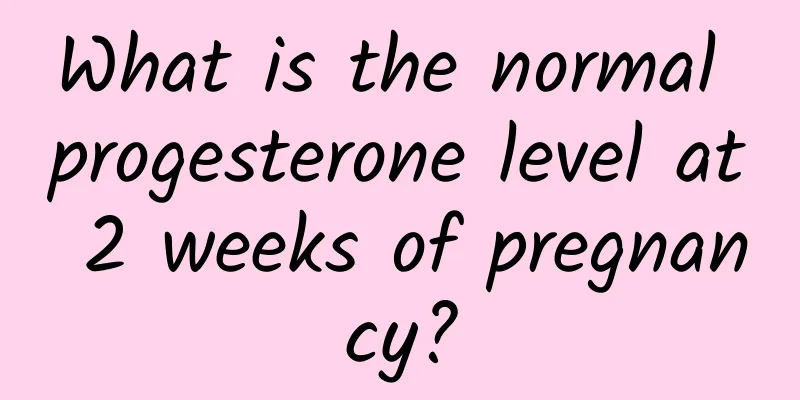Experts introduce to you the causes of clinical uterine fibroids!

|
Uterine fibroids can occur in any part of the uterus. According to the location of the fibroids, they can be divided into uterine body fibroids and cervical fibroids. Uterine fibroids are initially formed by a single tumor cell in the uterine wall. As the fibroids grow, they gradually grow from the uterine wall to different directions. Let our experts briefly introduce the causes of uterine fibroids to you! I hope it will be helpful to you! Uterine fibroids are divided into 3 categories based on their relationship with the uterine muscle wall and their causes: ① Intramural myoma: Intramural myoma is also called intramyometrial myoma. Myoma is located in the myometrium, surrounded by normal myometrium. The boundary between myoma and myometrium is clear. The uterine myometrium squeezed around myoma is often called pseudocapsule. This type of myoma is the most common, accounting for 60% to 70% of the total number of myomas. Myomas are often single or multiple, with different sizes. Small ones are as big as rice grains or soybeans, and do not change the shape of the uterus; large ones can enlarge the uterus or change the shape of the uterus into irregular protrusions, and the uterine cavity is often deformed. ② Subserous myoma: When the intramural myoma of the uterus grows toward the serosa layer of the uterine surface, so that the surface of the myoma is only covered with a small amount of muscle wall and serosa, it is called a subserous myoma. When the myoma continues to grow under the serosa and forms only one pedicle connected to the uterine wall, it is called a pedunculated subserous myoma. ③ Submucous myoma: Submucous myoma is an intramural myoma close to the uterine cavity. It grows toward the uterine cavity and is covered with endometrium. This type of myoma protrudes from the uterine cavity and can change the shape of the uterine cavity. Some myomas are connected to the uterine wall only by a pedicle, which is called a pedunculated submucous myoma. This type of myoma is like a foreign body in the uterine cavity, causing reflex uterine contraction. Due to gravity, the myoma gradually moves down to the internal cervical opening, and eventually the pedicle is stretched, and the myoma is gradually pushed to the external cervical opening or vaginal opening. This type of myoma accounts for about 10% of the total. Cervical fibroids can grow under the mucosa of the anterior or posterior lip of the cervix. Cervical fibroids can protrude into the cervical canal to form pedunculated cervical fibroids. Cervical intramural fibroids can gradually grow larger, lengthening the cervix, or protrude into the vagina or become incarcerated and fill the pelvic cavity. At this time, the normal-sized uterus is located on the huge cervix, pushing the uterus or bladder to the lower abdomen, and causing the anatomical relationship of the pelvic cavity on both sides to mutate, increasing the risk of surgery. The above is the cause of uterine fibroids briefly introduced by the experts. I believe you already know it. If you have any questions about uterine fibroids, please consult our online experts. We will serve you wholeheartedly! Uterine fibroids: http://www..com.cn/fuke/zgjl/ |
<<: Surgery is the main treatment for uterine sarcoma
>>: What are the symptoms of chocolate ovarian cysts?
Recommend
What should you pay attention to before abortion?
Nowadays, more and more female friends choose abo...
How to remedy the situation if you have sex 8 days after an abortion? What are the harms of having sex after an abortion?
After an abortion, you should first refrain from ...
How to restore uterine prolapse to normal
How to restore uterine prolapse to normal? Uterin...
Mandatory labeling of beef products to indicate origin will take effect in September
The Legislative Yuan amended and passed the Food ...
Why do women suddenly experience amenorrhea?
Women’s menstruation can be said to be a troubles...
What are the healthy diets after abortion?
In recent years, more and more unmarried women ha...
Hong Tae-woong uses the "cup and bowl palm" weight loss method again
Hung Tai-hsiung, director of the registration gro...
Does the brain selectively remember? To lose weight, use slimming apps to monitor your diet
The human brain is very interesting. We have neve...
What exactly is painless abortion? What are the categories of painless abortion?
Abortion is a way to help women terminate pregnan...
Let’s make light summer meals! Low GL sweet potato and cherry tomato salad, delicious and nutritious
Sweet potato and cherry tomato salad is a dish th...
Why do young women suffer from premature ovarian failure?
Many women under 30 have ovaries in their 40s bec...
Four diagnostic criteria for bacterial vaginosis
Bacterial vaginitis, also known as nonspecific va...
Several common health care methods for uterine fibroids in daily life
"What are the health care methods for uterin...
Three kinds of TCM special treatments for adnexitis
Adnexitis refers to inflammation caused by infect...
What is the best medicine for treating cervical erosion? These Chinese medicines can be used for cervical erosion
Cervical erosion is a relatively common gynecolog...









